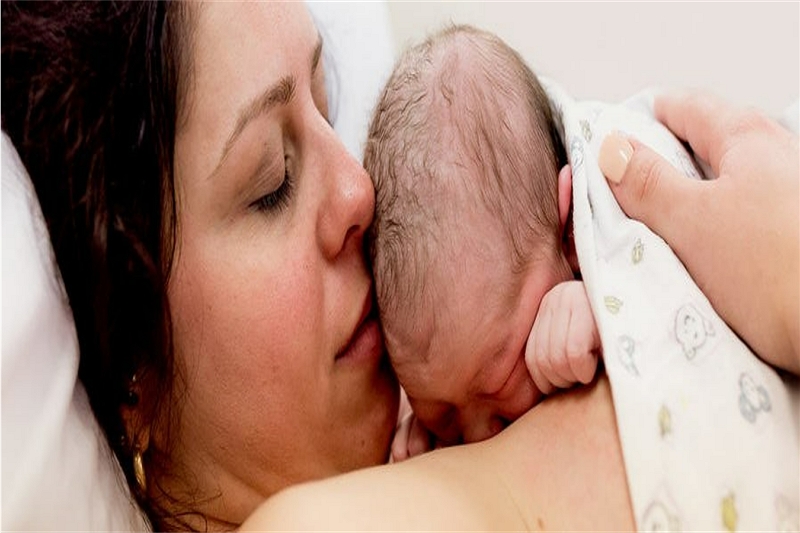How to wear non maternity clothes when pregnant? Want to wear non maternity clothes when pregnant? There is a good chance you can still fit into your regular clothing. Keep reading for helpful tips on how to do it!
The first thing that needs to be done is measuring at the top of the belly and making sure there are no limitations as far as what will be worn.

Many women think they have to stop wearing jeans after becoming pregnant but this isn’t true! The second test involves picking up some stretchy pants- yoga, leggings or jogging bottoms with an elastic waistband work well.
In addition, if those items don’t look great then try adding an oversized tunic over them paired with boots or wedges for casual outfits while pregnant and if the outfit needs a little more formality then try heels to dress it up.
How do I tell my boss about maternity leave?
Some women may be nervous about telling their boss they are pregnant and if this is the case, it’s best to tell them as soon as you can. It will also give your employer time to find a replacement if needed.
If possible, speak with your HR department at work before making any decisions on when or how you should announce that you’re having a baby so that everyone has an understanding of what’s going on in your life and still get the job done!
Is maternity leave paid?
Maternity leave varies from country to country; however, most employees worldwide receive some form of paid parental leave after giving birth (meaning paternity/maternity benefits provided by employers).
In many countries like Norway for example, all mothers have a legal right to a full year of maternity leave, which is fully paid by the government.
The United States also has paid parental leave laws in place for federal employees and some states have begun passing laws that require companies to provide their employees with paid family/medical leave (meaning benefits provided through employers).
Can I take 2 years of maternity leave?
Yes, you can. If you decide to take two years or more of maternity leave then your employer has no legal right to give you a written notice that the contract is terminating.
You will need to use all 12 weeks’ continuous service for it qualifies as an “entitlement” and not be deemed a period of absence from work during which continuity of employment was broken.
If instead, you only want to take 52 weeks off but still return part-time when going back on parental leave – this would mean returning after 24 months (which would meet exemption criteria) at a 26% pay rate due to qualifying for statutory shared parental pay since returning after one year’s absence from the job market means less than 26%.
What benefits can I claim when pregnant and unemployed?
While you may not be at work, you can still claim benefits. When pregnant and unemployed it’s important to know your rights regarding claiming unemployment benefit or maternity allowance as well as the other options available to help support yourself and your new family member.
While many women are aware that they will qualify for maternity leave from their employer once they return to work after having a baby, there is often confusion over what other financial assistance might be available during pregnancy and beyond.
If employed but on paid sick leave (or even unpaid) when you become pregnant then depending upon how long this runs for – it could mean losing job-protected statutory maternity pay (SMP), which would normally start immediately after 26 weeks of gestation or 14 days before the baby is due, whichever comes later.
How long is maternity leave in Australia
The length of maternity leave in Australia depends on which state you live or work. Maternity leave is available to the birth mother, adoptive mothers and surrogates (for up to 52 weeks).
What is the maximum EI benefit for maternity leave?
There are two different types of EI benefits. The maximum weekly amount you can receive will depend on which benefit is right for your situation. Here are the details:
– For maternity benefits, there’s a standard rate that applies to each claim and an additional indemnity option—this second option means higher benefits in most cases, but only if both parents share the leave time equally. If one parent takes more than 35 weeks out of the 50-week program, they won’t be eligible for this pay increase.
With either type of benefit payment, actual amounts received by claimants may vary depending on their employment income before starting their leave period(s). As well as earnings from insurable employment during periods when beneficiaries are not receiving benefits.
– Canada provides a range of options for family leave, including five weeks of paid leave per year that can be shared between both parents—this time is intended to help new parents with the costs associated with caring for their newborn child(ren) and/or providing support during this important period in a parent’s life.
Additional unpaid parental leaves are available to self-employed workers or those whose employers do not offer such plans; these periods typically run from 52–150 days depending on how many years an individual has been employed at the same job before the commencement of his or her parental leave(s).
Parents also have access to EI sickness benefits if they cannot work due to health problems that arise while they’re pregnant or following birth or adoption of a child.
